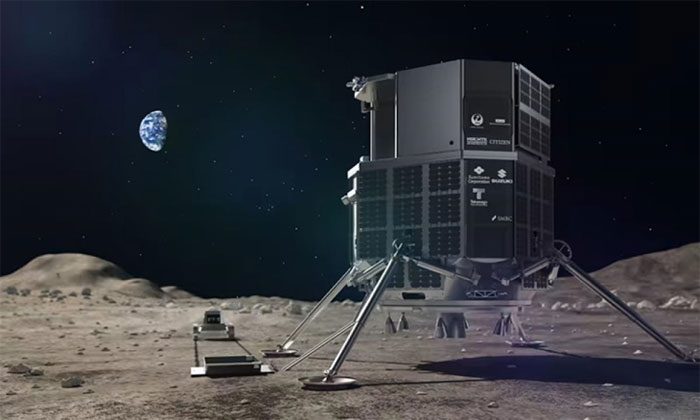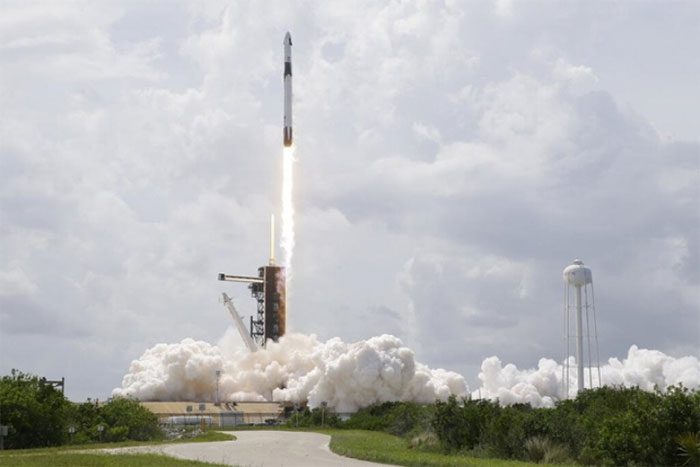Traveling to the Moon, private space flights, and exploring the larger Solar System are all possibilities that could unfold in space in 2023.
The American technology magazine MIT Technology Review suggests that humans will return to the Moon in 2023. Numerous unmanned test flights to the Moon have been planned for the coming year, driven by a renewed effort from the United States to send humans back to the fifth-largest natural satellite in the Solar System.
Jill Stuart, a space policy expert at the London School of Economics in the UK, stated that previous research often focused on sending humans to Mars, “but now it has shifted back to the Moon.”
The year 2023 could witness significant advancements in human space flights, including the first spacewalks and new missions to other destinations within the Solar System.
Traveling to the Moon
A lander is set to arrive on the Moon in early 2023. On December 11, 2022, Japan’s Hakuto-R lander, carrying the UAE’s Rashid rover, launched towards the Moon using SpaceX’s launch system. The equipment was placed atop a Falcon 9 rocket launched from Cape Canaveral Air Force Station in Florida, USA.

Simulation of the Rashid rover and Hakuto-R lander on the surface of the Moon. (Image: ispace)
According to ispace, a company based in Tokyo, the Hakuto-R lander is expected to touch down on the Moon around March 2023. If successful, Hakuto-R could become the first privately funded lander to complete a Moon mission in 2023.
Additionally, two American private landers, the Peregrine lander from Astrobotic Technology and the Nova-C lander from Intuitive Machines, are also scheduled to launch to the Moon around the same time.
Both missions are supported by NASA, equipped with various instruments to study the lunar environment, as part of the agency’s Commercial Lunar Payload Services program aimed at promoting commercial interests on the Moon.
“The Moon has received increased attention in recent years,” noted Jon Cowart, a NASA expert currently working with the Aerospace Corporation in the USA.
Intuitive Machines plans to carry out a second lunar landing in 2023. India’s and Japan’s space agencies also have plans to land on the Moon next year, with India aiming to launch the Chandrayaan-3 lander in August 2023.
This will be India’s second attempt to land on the Moon, following its first attempt in 2019. Meanwhile, Japan has yet to set a launch date for its SLIM lander. Russia is also reportedly planning to land the Luna-25 lander on the Earth’s only natural satellite in 2023.
Private Space Flights
Since May 2020, SpaceX has been using the Crew Dragon spacecraft to transport astronauts to space, with some crew members heading to the International Space Station (ISS) under contract with NASA, while others undertake private missions.

SpaceX launches the historic Crew Dragon spacecraft to the ISS. (Image: Getty Images)
However, the Polaris Dawn mission from SpaceX, scheduled for March 2023, will mark a significant advancement. The Polaris Dawn crew is expected to venture deeper into space than any previous Crew Dragon missions.
The Polaris Dawn flight will include four commercial astronauts targeting a maximum Earth orbit of 1,200 kilometers, higher than any crewed spacecraft since the Apollo missions.
This mission could help NASA determine whether a future mission could be utilized to service the Hubble Space Telescope, a possibility the agency is exploring with SpaceX.
Axiom-2 and Axiom-3, two other private space flights using the Crew Dragon spacecraft, are also scheduled to fly to the ISS in 2023.
Many experts are also looking forward to the return of Blue Origin, the aerospace company of billionaire Jeff Bezos, in the race for space. The company had paused its operations following a failed rocket launch in September 2022.
However, all developments in commercial human space flights could be overshadowed by the effort to launch the first orbital flight of SpaceX’s massive, reusable Starship rocket. The Starship rocket is undergoing launch pad testing in early December and is expected to be launched in 2023, possibly as early as late 2022.
If successful, the rocket would surpass NASA’s Space Launch System as the largest rocket to reach orbit, potentially changing the trajectory of human space exploration.
“The ability to increase mass to orbit opens up new opportunities. This could include human missions to Mars or beyond. But there is still a long way to go. 2023 is certainly a critical year for Starship,” stated Uma Bruegman, a space strategy expert at the non-profit Aerospace Corporation in the USA.
Other Locations in the Solar System
New missions to other locations in the Solar System are also drawing significant interest in 2023.
April 2023 will see a new mission by the European Space Agency (ESA) called JUICE, aimed at exploring the icy moons of Jupiter. Set to arrive in Jupiter’s orbit in 2031, the JUICE spacecraft will conduct detailed studies of the moons Ganymede, Callisto, and Europa, all believed to harbor subsurface oceans that may contain life.
“This is the first mission essentially focused on the icy moons. We might learn that these icy moons have very deep oceans and conditions that could permit life to develop,” said Mark McCaughrean, senior advisor for science and exploration at ESA.
By the end of 2023, ESA is expected to launch another significant mission, the Euclid space telescope, to search for dark matter.
In October 2023, NASA will initiate a critical scientific mission to explore 16 Psyche, a massive asteroid located in the Asteroid Belt. 16 Psyche accounts for about 1% of the total mass of the entire belt and is speculated to be the core of a primordial planet. This is a metallic asteroid, rich in iron, nickel, and gold.
The OSIRIS-REx mission by NASA is expected to return to Earth in September 2023 with samples from the asteroid Bennu. Amazon aims to launch the first satellites for the Kuiper Project in early 2023, marking the beginning of a constellation of 3,000 satellites that they hope will compete with SpaceX’s Starlink satellite internet service.
“There is a lot of activity in space next year. I am very excited about this,” Cowart remarked.


















































